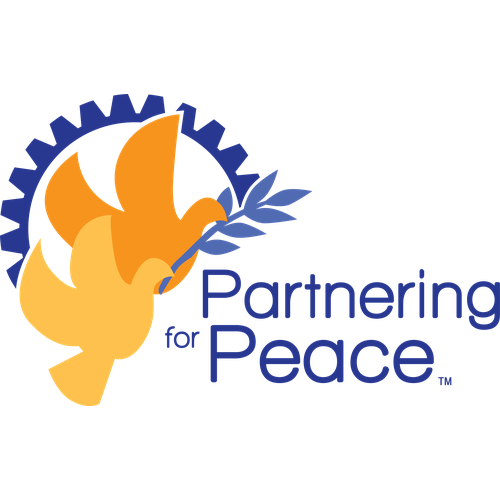
On March 15, 2020 news spread that EVERY PEACE CORPS VOLUNTEER ON THE PLANET WAS BEING EVACUATED! Every single volunteer’s existing service was abruptly interrupted – while those volunteers preparing for FUTURE assignments faced uncertainty about their future plans. The global Covid pandemic impacted everyone – wherever they were. The well-established evacuation plans were launched, bringing the best of the United States’ humanitarian volunteers home to an uncertain future.
It’s been nine months since that day – months of continued uncertainty and disruption of what had been hopes and plans for overseas humanitarian service – for some, coming home meant an early end to the Peace Corps assignment; for those who had just begun their service, uncertainty as to when or if there would be a return to the overseas post. With concerns about contagion, and the impossibility of air travel to far-flung places, the intervening months have been filled with anxiety, and disrupted dreams.
Life’s realities also intervened – some of those who returned needed to find gainful employment in a stressed economy; others were welcomed back home to begin filling their days with on-line course-work or job searches. For some of these volunteers, a local connection with a Rotary club might have helped volunteers upon their return – with local Rotarians providing referrals to job possibilities, volunteer opportunities and other activities – though in a new virtual world. For others, these connections had not yet been established. We should do something to change that!
The map in the middle of the “World View” Summer 2020 magazine of the National Peace Corps Association, reminds the reader of the incredible breadth of participation in the Peace Corps by our nations’ volunteers. Every state, and several territories welcomed their Peace Corps representatives home unexpectedly – some having ended their service for good – others in limbo until the Covid-19 pandemic eases or a vaccine becomes available to them. A formalized collaboration between the Peace Corps volunteers and their home communities might have alleviated some of the concerns – providing a network of connections able to help, encourage and support these uprooted citizens as they awaited news and tried to plan their futures.
Though many months have now passed since March, 2020, it’s not too late to establish connections between our nation’s Peace Corps volunteers and members of US Rotary clubs in their home communities. The map sent by the National Peace Corps Association in its Summer 2020 publication shows 148 Peace Corps workers in my State of Illinois alone. There are many more Peace Corps volunteers throughout Zone 29 (and parts of Zone 25B, which is in Region 36). I can only offer to assist with these areas, but this initiative could be expanded throughout other regions throughout the US. Using the resources of the Rotary/Peace Corps alliance, and Partnering for Peace, we should be able to connect these volunteers with Rotary Clubs in nearby communities. Once we confirm these connections, we can give the volunteers the information about the local club and invite them to a meeting. You have to start somewhere!
We should also be matching every NEW Peace Corps worker with a US Rotary club so that there is a connection between the Peace Corps worker at home and a local club – the home club might be able to fund small international grants in the Peace Corps workers’ villages, and then expand the Rotary footprint more broadly through a global grant as time goes on. Each volunteer has a story to tell, a village to help and a potential humanitarian grant to consider and support.
There is another reason for suggesting these connections: I am in the process of setting up a new Passport Club, the Northeast Chicagoland Passport Club, which might be an attractive alternative to potential Rotarians not interested in “traditional” Rotary meetings. Passport clubs typically meet virtually and focus on Rotary’s humanitarian service and global initiatives – a good fit with the Peace Corps philosophy. Similar clubs are already in existence in California, Texas, Minnesota and other states which may also be of interest to RPCV’s. It may also be possible for groups of former Peace Corps Volunteers to set up “cause-based” Rotary clubs to continue to support other Peace Corps initiatives.
Ideally, the establishment of these Rotary connections, through grants, local Rotary clubs, and potentially membership in virtual Passport or cause-based clubs, will enable Peace Corps volunteers to continue their passion for humanitarian service after they return home to the United States. Collaboration with local Rotary clubs will (1) facilitate the process of funding in-country projects in the volunteer’s communities; (2) potentially scale-up small grants to other communities in the overseas country; (3) provide networking opportunities to the returning Peace Corps Volunteer through Rotary’s business connections; and (4) facilitate the continuation of global service through the volunteer’s lifetime through participation in Rotary’s global humanitarian service.
Partnering for Peace – now – in the Covid crisis – and long term - can inspire collaboration and humanitarian service through 7000 Peace Corps volunteers now – and the countless former Peace Corps workers in our midst. Let’s use this crisis to reignite the passions of the army of former Peace Corps volunteers – and introduce as many as possible to Rotary clubs in their communities so that they can share their stories, and possibly generate new ideas for grants and projects around the world.
Let’s tell the story of our partnership – and the good it is doing worldwide.
